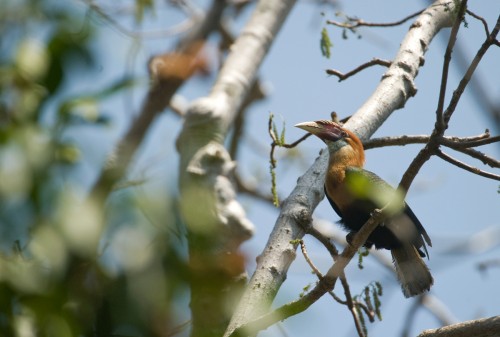Forest Guards Battle Modern Poachers with Aging Weapons
The forests of Assam are slowly turning into a battle field between the protectors and the hunters. At one end are the forest guards risking their lives to save the one horned rhinos. On the other end are the poachers who can and will kill every living rhino for its horn if not stopped. But scratch the surface and you note that it is not really a war of equals here. It is a battle between WW II vintage bolt-action rifles and the latest HK MP5 submachine guns that can fire 100 shots even as the vintage is readied to aim and shoot. The rotting corpses of the rhinos killed everyday are proof of who is winning this one sided war.

Whenever there is news of a poached rhino or a tiger in the jungles of India, fingers are pointed hastily at the forest officials given the duty to protect and failing miserably yet another time. But even if the ineptitude is one of the reason for the constant and increasing daredevilry in the poacher’s part, what is also a significant factor is the absence of any decent and latest firearms in the possession of 90 percent of the forest guards of India.
Rusted Artillery
In Assam, forest guards have been battling poachers with .315 bore and 12 bore guns and 7.62mm 2A1 bolt-action rifles (erroneously referred to as .303). A senior officer points out that these guns are excellent to scare of wild animals but resemble toy guns when battling poachers armed with the sophisticated semi-automated machines.


The TOI reports how even in Gujarat’s Sasan Gir Forest home of the last Asiatic Lions, guards have been forced to fight poachers with 12 bore double barrel shotguns and .32 revolvers.
“We have been purchasing only these revolvers lately. But wherever the threat of poaching is high, units are given other guns. We have no semi-automatic or automatic rifles,” says Sandeep Kumar, the deputy conservator of forests, Gir.
While the forest department lacks ammunition and even the will to fight crime systematically, poachers have the golden hands of mafia and militants to back their illegal trade. With flourishing markets in China, Vietnam and other places in South-East Asia, Chinese firms are willing providing sophisticated arms to these groups. The profits obtained from one rhino horn or tiger bone sale, enough to add more such dangerous weapons to the kitty.
While a World War II bolt-action rifle may cost around 550 dollars in the market today, a modern HK MP 5 is a whooping 17.5 thousand dollars. This simple price difference shows the amount poachers are easily spending and earning trading in illegal animal parts.
“These weapons are either originals or knockoffs of Russian AK series rifles, American M16s, and German HK MP5s and HK 33s. The superior rate of fire of these weapons gives the user a huge advantage. Poachers have been using Kalashnikovs extensively, and the HKs in a few cases,” says a senior Assam Police officer involved in counter-insurgency operations.
No wonder, insurgent groups and surrendered militants are entering into the profitable rhino horn trade.
Untrained…Unprepared
The lack of proper arms and the training required to fight criminals in the jungle is a deadly combinations – one that is costing innumerable animal lives.
Says Amrit Bhuyan, the commandant of 2nd Assam Forest Protection Force,
“My 251 men are inside Kaziranga right now. They have been given police training for the first time. I don’t think they need to be taught jungle warfare tactics akin to the Army. But yes, they need to know how to function in a jungle environment; how to distinguish between a poacher and a rhino when it is pitch dark.”
Without any night vision equipments, the guards are literally in the dark facing poachers laced with every possible ammunition in their armour.
N K Vasu, the director of Kaziranga National Park, sees it differently.
“Our needs are different from the Army’s. The SLRs, we believe, will help us stay in the fight; but we are also trying for more advanced weapons like the AK-47,” he says.
It may take a year or more for government to hear to proposed amendments, approve of the need and procure modern weapons for forest officers. Till that time, it is field day for poachers successfully looting all they can from Indian jungles and secretly laughing at the ease with which they commit their crimes.
Until the ecological war is fought with the same seriousness as the war at the borders, the mound of dead animals will only keep rising.
More Related Stories,
Are Bird Photogrpahers Damaging the Avian Habitat?
Poachers Now Using Children as their Ears and Eyes






3 thoughts on “Armed…not Dangerous”